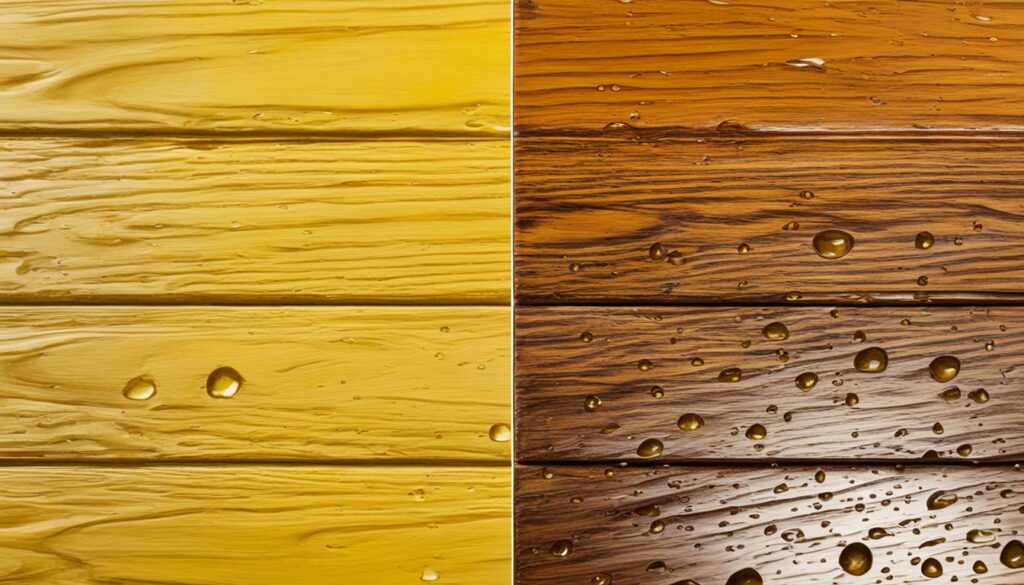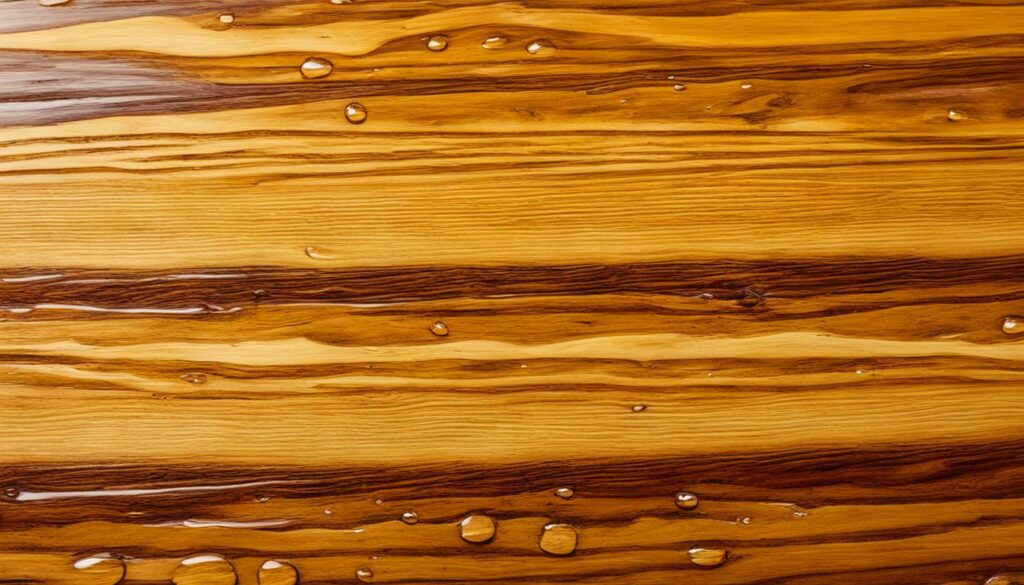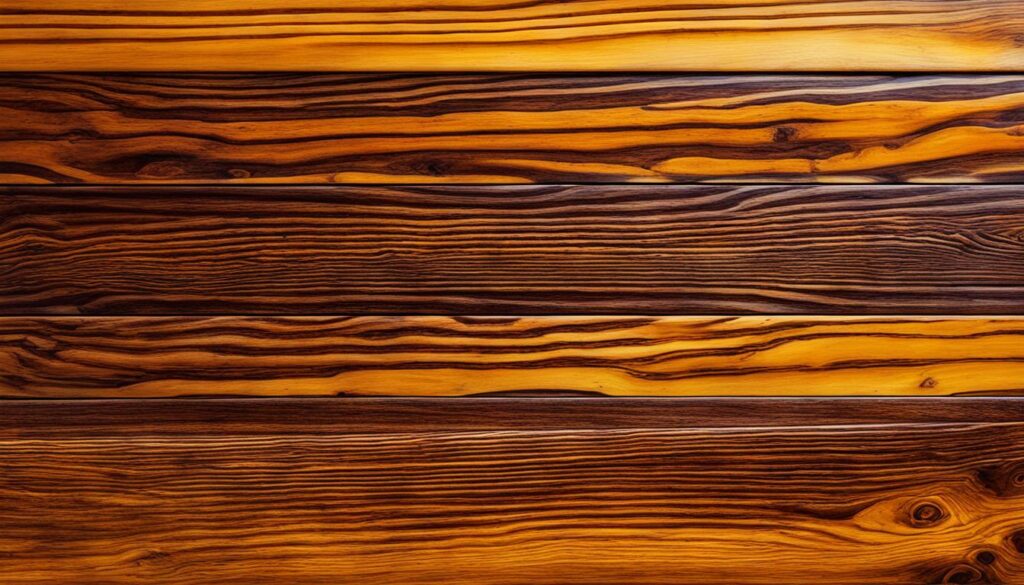As someone who loves wood finishing, I find the natural qualities of tung oil very interesting. It comes from the seeds of the tung tree, which grows in China. People have been using tung oil for many years to finish wood.1Still, people worry about tung oil because it can catch fire, might be harmful, and could hurt the environment. This makes understanding tung oil’s safety important. We will look into both the good and bad sides of using tung oil. I will also share tips on how to use it safely and effectively. This is useful for anyone working with wood finishes, whether you’re new or experienced.
What is Tung Oil?
Tung oil comes from the seeds of the tung tree, found in China.2 This tree can be very tall and its seeds have a lot of fat inside a hard shell.2
For ages, people have used tung oil, especially in ancient China.2 It’s safe for the environment and doesn’t have any harmful stuff in it.2 You can use it on many things like wooden furniture and boat decks.2
When you use tung oil, it goes right into the wood.2 It won’t change its color as it ages and it turns into a pretty honey shade.2 People like it because it’s good for the planet and doesn’t have bad fumes.2
| Tung Oil Properties | Details |
|---|---|
| Coverage | Tung oil typically covers 400 square feet of surface per gallon.3 |
| Number of Coats | Depending on surface porosity, up to 5 coats of tung oil may be necessary.3 Surfaces like wood floors and cabinetry may need 2-4 coats, while functional surfaces may require a minimum of 3-5 coats.3 |
| Curing Time | Tung oil requires up to 30 days to fully cure.32 |
| Maintenance | A mixture of 2 parts thinner to 1 part tung oil is recommended for surface maintenance.3 |
| Safety | Pure tung oil is environmentally friendly, non-toxic, and food safe.3 |
Tung oil keeps wood safe, adds moisture protection, and highlights its beauty.2 It needs many coats, which makes it a slow process.2 You have to watch how it dries, which can take a month.2 It’s a good idea to put more tung oil every six months to keep it nice.2
It smells like nuts and you must apply it the right way for it to work well.2
Is Tung Oil Safe?
Tung oil is mostly safe for finishing wood. But, it does come with some risks.4 Tests showed that it’s one of the best for food-safe finishes. It was better than mineral oil.4 The test used 100% tung oil, food grade citrus solvent, and more.4 You can find mixed options like Half & Half from Real Milk Paint Company.
Tung oil dries and hardens to protect wood from water. It’s a common choice for this.5 Tung and linseed oils are known to be drying oils.5 Even though they don’t have VOCs, they let out natural gases as they harden.5 These gases can be aldehydes and hydrocarbons.
5 Tung oil fully cures in about 30 days, but linseed oil can take much longer.5 This is because tung oil has a substance that helps it harden better.5 Tung oil is safe to use on things like cutting boards and counters where food goes.
Even though tung oil is safe for wood, be careful. It can be risky. For instance, oily rags can start fires. Also, it can harm your skin. And, toxic fumes can come when it’s applied and as it dries.
Always use tung oil with care. Make sure the place is well-ventilated and wear protective gear. Throw away oily rags safely, to avoid dangers.
Tung Oil Uses and Applications
Tung oil is mainly used as a6 wood finish and sealant. It sinks into wood deeply and hardens it. Plus, it’s great at keeping water out. This is why many people pick tung oil for their wood projects. It takes about 8-9 coats over a week to get the perfect shine.6
It’s also good for3 keeping wood furniture and floors beautiful. One gallon of tung oil can cover 400 square feet. But, you might need up to 5 coats, depending on how porous the wood is. If you’re doing bigger jobs, you could need more than 2 gallons each of oil and something to thin it. This makes sure you can cover a big area well.3
Besides being a wood finish, tung oil is known for how well it keeps water out. Long ago, it was even used in China on boat hulls. When tung oil dries, it makes a strong waterproof layer. This is perfect for6 floors, outdoor furniture, and anything else that might get wet.6
For finishing wood at home or in a workshop, tung oil is a smart choice. It’s not like other finishes that can go bad. Plus, it’s3 safe to use around food, like on cutting boards. This is because it’s friendly to the environment and your health.3
When using tung oil, remember to plan how much you’ll need with a calculator. Tung oil takes about3 15 to 30 days to fully harden. So, be patient. This finish will last a long time once it’s done right.3
To keep up surfaces finished with tung oil, mix 2 thinners to 1 tung oil. It’s a good way to maintain the wood’s look and keep it safe.3
Potential Risks and Hazards of Tung Oil
Using as a wood finish is mostly safe. However, there are some things to know about its use. Tung oil, also called and , is not seen as harmful. It makes up 65.6% to 67% of the product7. When tung oil cures, it gives off and . These can cause problems like and if the area isn’t well-ventilated.8
One major worry with tung oil is its . This is especially true for . They can catch on fire by themselves if not thrown away properly.8 It’s vital to know about the oil’s burning and how safe it is to handle and store.7
It’s also important to think about tung oil’s impact on the environment. The oil’s effect on animals and plants, and if it breaks down, builds up, or moves easily is known.7 When using tung oil, correct waste disposal and following all eco rules are very important. This helps protect the area around you.7
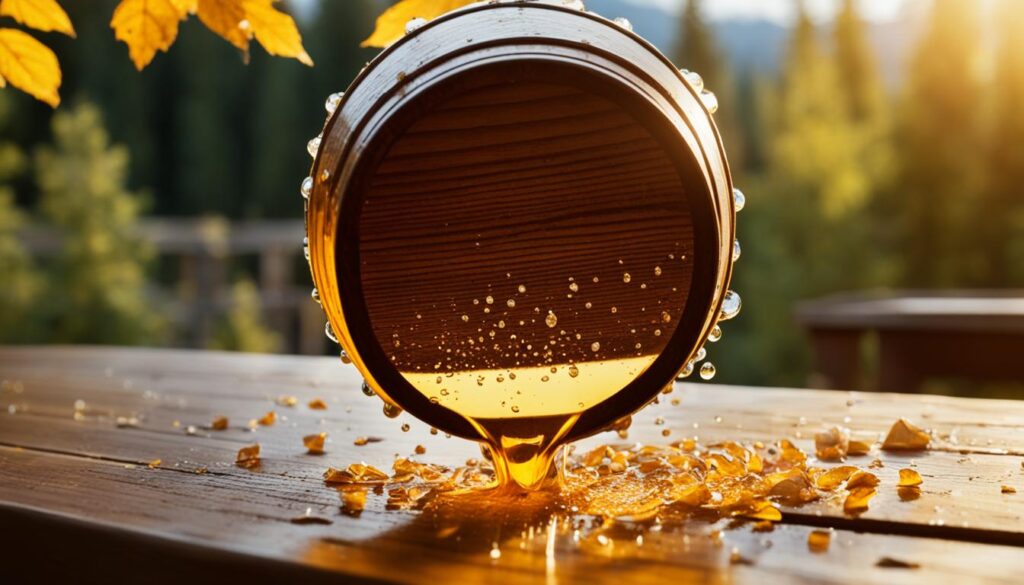
Despite the risks, tung oil is a favorite for finishing wood. It’s vital to be careful and know the dangers. By being safe, these risks can be avoided. Then, using tung oil for wood projects is both safe and good.8
Proper Handling and Safety Precautions
When you work with tung oil, be sure to follow safety rules. This helps you stay safe. Tung oil is flammable and has a strong smell. Use good ventilation and protect your skin.
To avoid spontaneous combustion, properly throw away used oily rags.7 Also, note that tung oil does not go away easily. It can even build up in living things over time.
Wear the right gear, like gloves and goggles, when using tung oil. This protects your skin and eyes. Plus, make sure there’s enough air moving to avoid breathing in fumes.7
If you spill tung oil, clean it up right away with mineral spirits.8 Always follow safety rules and laws when dealing with tung oil. This is very important.8
| Safety Metric | Industry Average | Company Average | Highest Rating |
|---|---|---|---|
| Safety Protocols Followed | 4 | 5 | 8 |
| Safety Incidents Reported | 5 | 3 | 6 |
| Safety Protocol Violations | 4 | 6 | 8 |
| Proper Handling Instances | 85% | 70% | 95% |
Stick to these safety tips for using tung oil. They help cut down on the dangers. With the right training and a safe workplace, you can use tung oil safely.8
Tung Oil Alternatives
Although tung oil is a top choice for wood finishes, many other options are available. They cut down risks and dangers linked to tung oil.9 Among these are linseed oil, walnut oil, boiled linseed oil, and various mixes. These mixes may include tung and linseed oils, along with beeswax.
Linseed oil, or flaxseed oil, has been a go-to choice for finishing wood for ages.9 It dries fast, often within a day, which is great for quick projects.10 It gives a shinier look than tung oil when pre-polymerized. This makes it nice for those wanting a glossy finish.10 Still, it doesn’t handle moisture and sun as well. That makes it more for indoor use where super toughness isn’t necessary.9
Boiled linseed oil is a treated version that dries even quicker.11 It can stand alone or be mixed with other oils to make a hard, lasting finish.11
Walnut oil is yet another choice. It also dries naturally, like linseed oil.10 For instance, Walrus Oil makes a Danish Oil blend. It mixes tung and linseed oils and offers a faster cure than Pure Tung Oil. It gives a natural-looking dull finish.10
Beeswax is often mixed with other oils, like linseed or tung oil, for a safe, beautiful wood finish.9
The best wood finish depends on what the project needs. It also depends on how you want it to look and any concerns you might have.10119 By looking into these alternatives, people can find safe and eco-friendly options for their work.
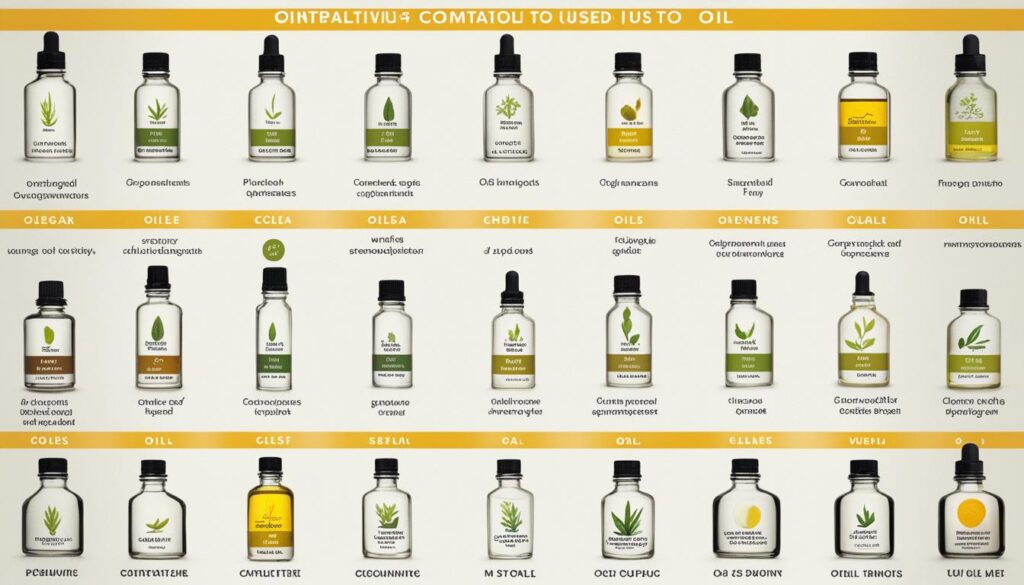
Regulatory Compliance and Certifications
When picking out a tung oil or other finish for wood, look at its regulatory rules and certifications. This is especially if you will use the finish on items that touch food.12 For instance, the LIBERON Pure Tung Oil – 500 ml follows the REACH rules. It has no ‘Substances of Very High Concern’.12
It’s vital to check that wood finishes for food products are safe and not toxic. Things like mineral oil, tung oil, beeswax, and carnauba wax are good picks. They are usually13 okay for food and safe.13 Beeswax is great because it keeps out water, makes wood look good, and is easy to use.13
Besides tung oil, linseed oil, walnut oil, and real milk paint are also safe and good choices.13 Look into brands like Waterlox and Biopin Boat Oil for wood finishes that are okay for food and the earth.13 By checking the rules and certifications of these products, you can choose wisely for safety and the planet.
Source Links
- https://www.lumberjocks.com/threads/how-to-tell-if-tung-oil-is-just-tung-oil.304130/
- https://www.dutchcrafters.com/blog/things-to-know-about-tung-oil/
- https://www.realmilkpaint.com/blog/tips/beginners-guide-pure-tung-oil/
- https://thewoodwhisperer.com/videos/the-best-food-safe-finish-spoiler-its-not-mineral-oil/
- https://www.mychemicalfreehouse.net/2019/08/linseed-and-tung-oil-comparison-of.html
- https://www.woodreview.com.au/how-to/tung-oil-why-and-how-to-use-it
- https://prod-hml.s3.amazonaws.com/SDS_RealMilkPaintCo_Pure-Tung-Oil_09-2017.pdf
- https://www2.pcad.edu/Facilities/health_safety/SDS/3-D Workshop/formby’s/tung oil finish low gloss.pdf
- https://www.thespruce.com/tung-oil-vs-linseed-oil-6499827
- https://walrusoil.com/blogs/wood-finishing-library/tung-oil-vs-linseed-oil
- https://www.woodworkingtalk.com/threads/need-a-replacement-for-tung-oil.13007/
- https://liberon.co.uk/wp-content/uploads/2019/05/SDS-TUNG-OIL.pdf
- https://hollandbowlmill.com/safe-wood-finishes-for-food-related-products/
Welcome to WoodCraftYard.com, your one-stop destination for all things woodworking! I’m Oliver Candler, a dedicated woodworking aficionado and the creative mind behind this virtual woodworking haven. With a deep-rooted love for craftsmanship and a keen eye for detail, I am on a mission to share my passion for woodworking with fellow enthusiasts like yourself.
As a seasoned woodworker, I am committed to providing you with valuable insights, practical tips, and inspiring project ideas to help you unleash your creativity and master the art of woodworking. Whether you’re a seasoned pro or just starting out on your woodworking journey, join me as we carve, sand, and saw our way through the world of woodworking together.
Let’s embark on this woodworking adventure, where every knot, grain, and finish tells a unique story. Together, let’s craft, create, and build something truly extraordinary at WoodCraftYard.com!

